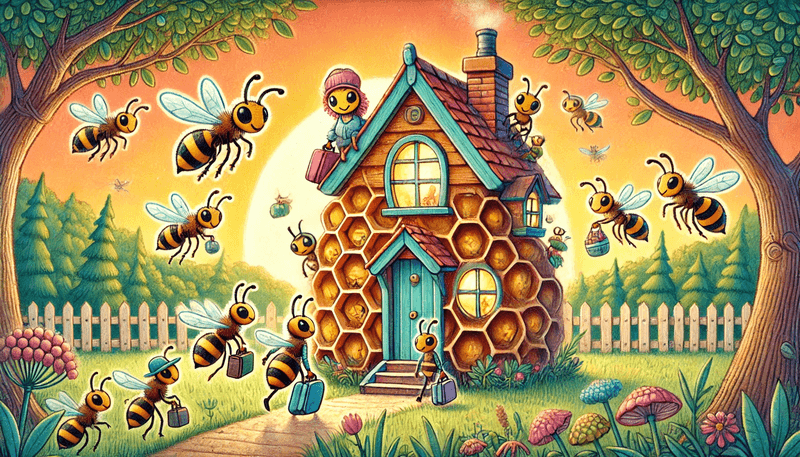
Do Wasps Return to a Nest the Next Year?
Wasps are fascinating creatures known for their intricate nests and complex colony behaviour. One common question is whether wasps return to the same nest year after year. Understanding the nesting habits of wasps can help homeowners better manage their properties and avoid any unwanted surprises during the warmer months. In this article, we will explore the lifecycle of a wasp colony, how nests are built, and whether wasps reuse old nests or start fresh each year.
The Life Cycle of a Wasp Colony
A wasp colony goes through several stages, starting with the queen. After overwintering in a safe, secluded spot, the queen wasp emerges from hibernation each spring. Her first task is to find a suitable location to build a new nest. This is crucial for the success of her future colony. The queen selects the site carefully, seeking a place that offers protection from the elements, easy access to food, and space for the nest to grow.
Building the Nest
Once the queen chooses a location, she starts the nest herself. She does this by chewing wood fibres from trees, fences, or other wooden structures and mixing them with her saliva to form a papery pulp. Initially, the nest is quite small, often around the size of a golf ball. The queen constructs several cells (hexagonal chambers) to lay her eggs.
After the eggs are laid, the queen continues to work on expanding the nest while caring for the larvae. Once the first generation of workers hatch, they take over nest building and foraging for food, allowing the queen to focus solely on reproduction. As the summer progresses, the nest grows significantly, sometimes reaching the size of a football or larger, depending on the species.
Do Wasps Return to Old Nests?
One of the most important things to know about wasps is that they do not usually return to the same nest the following year. A wasp nest is built for one season only, and once winter arrives, the colony dies off, leaving the nest abandoned. Only newly hatched queens survive the winter by hibernating, while the rest of the workers and males perish as the cold weather sets in.
A queen wasp will not reuse an old nest. Instead, she will build a brand-new one the following spring. This ensures that the new colony starts with a clean, disease-free environment. Old nests, which may harbour parasites or diseases, are abandoned in favour of new, freshly constructed ones. However, if the location is particularly suitable for the colony, the queen may choose to build a new nest near an old one.
Why Wasps Build New Nests Each Year
By building a new nest every year, wasps reduce the risk of transmitting diseases or parasites to the new colony. Starting fresh each year allows the colony to avoid these threats, increasing their chances of survival and success.
Besides health reasons, wasps may also find an old nest damaged by weather or other animals during the winter months. A new nest offers better protection and is more suited to the needs of the growing colony.
Signs of a Live or Dead Nest
One of the challenges homeowners face is determining whether a nest on their property is active. Observing the size and timing of the nest can provide valuable clues.
Large Nests in Spring
If you come across a large wasp nest in the spring, it’s almost certainly an old, abandoned nest from a previous year. As wasps don’t reuse their nests, this one will be dead and pose no immediate threat. However, if the nest is particularly large and in a prime location, it’s possible that a new nest could be built nearby in the coming weeks.
Small Nests in Late Summer
On the other hand, a small nest spotted in late summer may indicate a failed attempt to establish a colony. In some cases, the queen may have been killed early in the season, or the nest may not have had access to sufficient resources to grow. A golf-ball-sized nest found in the late summer suggests that the colony never took off and is unlikely to pose a threat.
Building Nests Near Old Ones
While wasps do not reuse their old nests, it is not uncommon to see new nests built alongside or near old ones. This usually indicates that the location is highly suitable for nesting. Wasps look for areas that offer protection, warmth, and easy access to food sources like insects and sugary substances. If you’ve had a wasp nest in a particular spot on your property before, there’s a chance that a new one could appear nearby in subsequent years.
In these cases, it’s essential to be proactive and watch for early signs of nest-building in the spring. Spotting a new nest while still small can make it easier to handle before the colony grows too large and becomes a more significant problem.
